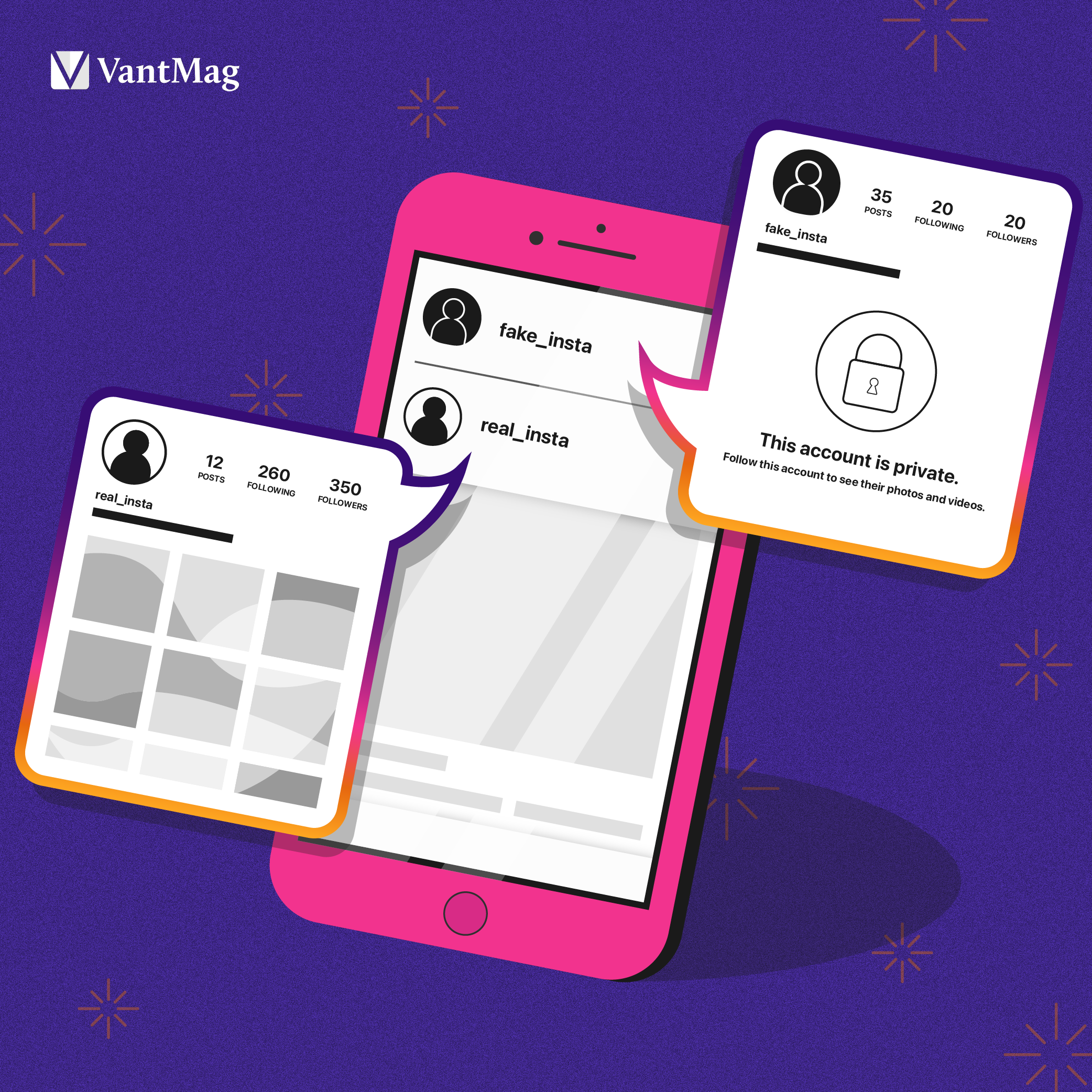Reliance on social media is at an all-time high, since people are compelled to participate in online activities. Platforms such as Facebook and Twitter have allowed us to make up for the distance between people we typically interact with in person. To some degree, we are watching each other’s lives through screens and highlight reels—but people continue to yearn for privacy even in the virtual world.
Through finsta—a portmanteau of “fake” and Instagram—users are given the freedom to post content that is purposefully different from their “real” Instagram accounts, or rinsta. Vantage goes behind the scenes of making and maintaining a finsta account, looking deeper into the significance of having virtual safe spaces that allow a person to be more candid and real.
Identifying motivations
There is an overwhelming pressure to feign perfection on an Instagram account. With the Rinsta being notorious for intimidating its users to fabricate content “for the ‘gram,” it’s unsurprising that people create a finsta. It allows users to become less filtered and more comfortable on the same platform without being subject to larger scrutiny. Some would even set up multiple accounts to downsize the number of their followers.
Such is the case for Megan Guzman (2 AB POS), who shares that creating several finstas gives her freedom to post with little reservations. “I wanted to have a real safe space where no one was going to judge me for feeling the way that I did,” she explains.
Guzman expresses herself differently on her finsta accounts—writing sentimental posts on one, and sharing amusing TikTok videos on the other. She says they’ve become avenues to share varying emotions.
Carlyle Chua (3 BS LM) echoes similar sentiments, expressing her relief over the feeling that she can be more like herself on finsta. “In your rinsta, it’s like statistics matter—the numbers [and] your followers matter—especially if you want to pursue a career in social media,” she shares. “[But] with your finsta, none of those things matter because it’s locked [and] it’s private.”
A finsta’s exclusivity gives users the opportunity to use it as a “memory dump”—an archive for them to keep photos and videos of their everyday lives.
“Throughout the years it’s become like a place where you can just really be yourself and [portray] another side that my acquaintances couldn’t see,” Chua says. Her finsta has been a space that permits her to be uninhibited with her posts as she fully trusts the people she’s sharing them to.
Audience is a decisive factor when it comes to posting on social media. Serena Vaswani, a professor from the Communication Department, draws on theories from various disciplines to explain why people’s actions are easily influenced by the perceptive audience.
Vaswani first introduces Goffman’s theory of dramaturgy, which likens people to actors. People perform according to the specific context they find themselves in—be it time, audience, or setting. She then supposes that, as a result, “our identity is always in flux, as it is constantly negotiated in our interactions with others.”
Vaswani also provides a psychological perspective to the finsta phenomenon by citing George Herbert Mead’s theory of symbolic interactionism. “When we engage in conversations with others, we are constantly weighing our next words against how we imagine they will react,” Vaswani explains.
This attitude of being hyper aware is carried over into social media. Users with rinsta accounts often find the need to adjust themselves, conscious that there is a person on the other side of the screen.
Overall, taking precautionary measures on social media is a basic procedure. “It’s [a] normal human instinct to think about who you’re sharing things with [online],” Guzman admits.
The authentic self
People are inclined to keep themselves in check when put into different situations. Finstas are a response to when these situations or contexts collapse—separation boundaries between social groups are blurred, and it becomes too much for one space.
It is a lot easier to set people apart in face-to-face interactions. However, Vaswani explains that it’s harder to compartmentalize different facets of ourselves when we’re with different people. “[Online], we have larger audiences, followers, and friends [in the same space] with the most sensitive potential members of this audience, like family members or figures of authority.”
Posts on rinsta will always be under watchful eyes, which is why users are more sensible about the things they post. “I’ve become conscious because I don’t want to mess up. I get so scared of people forming bad opinions about me,” Chua shares. While there are glimpses of her real personality in her captions, a lot of internal censoring goes through every post.
Does this imply that people are inauthentic online? Arguments surrounding social media claim that everything we see on the Internet is fake because people are just staging performances. The concept of having a finsta and rinsta is an implication that a person is “being fake” elsewhere.
Guzman believes otherwise. “Finsta is honestly more of the real me,” she argues, adding that she simply chooses to show her “best self” on her main account. “On finsta, it’s really where I get to be the most raw and the most myself.”
Authenticity isn’t a word often associated with the web; Vaswani cites Dewar’s Finsta: Creating “Fake” Spaces for Authentic Performance (2019) in breaking down the dilemma. Dewar found that people set up finstas as a means of “sharing content that would not be deemed acceptable on other more public platforms.” This explains the need to guard certain self-disclosures when posting on these accounts. Users control the audience allowed to engage with them, and are only usually followed by other finsta accounts.
But this doesn’t mean that content posted in these accounts are purely unfiltered. Dewar also found there are still certain norms that dictate what is socially acceptable for finstas. Some of these include “humor, authenticity, frivolity, and self-deprecation (e.g., ugly selfies).”
Vaswani says that people are constantly managing and concealing themselves. They are persistently attempting to present an authentic self that is not only interesting but also socially acceptable.
Whether physically or virtually, people will always be seeking to find and create spaces that allow security and comfort. Being in a constant state of lockdown has limited our opportunities to find consolation in people and places that we once turned to. Because of this, there have been less avenues for self-expression and empathy.
People have naturally turned to spaces that allow them to connect and feel solace in a socially distanced world. Finsta has become a platform for people to be more honest and outspoken—paradoxically becoming the real Instagram.
These times have encouraged many people to set up their own safe spaces. With a sizable chunk of a college student’s life conducted online, it’s understandable that more people are starting to assert control over their social media accounts. No matter how you perceive finstas, it’s important to recognize that people have different ways to cope. The most we could do is practice virtual empathy by making our own little spheres safe for those who may stumble upon them.






